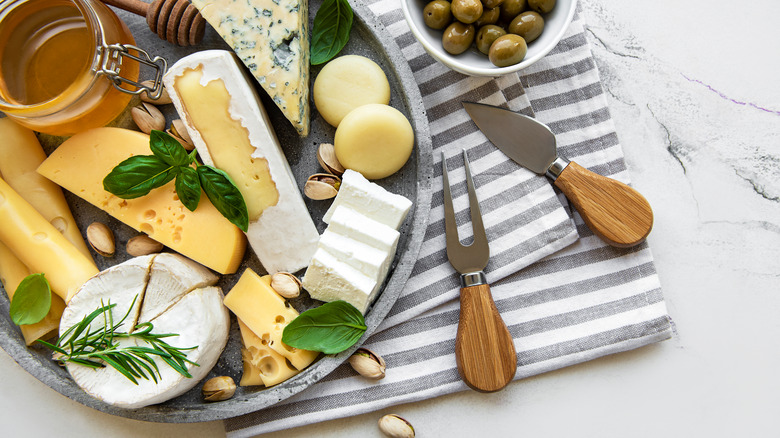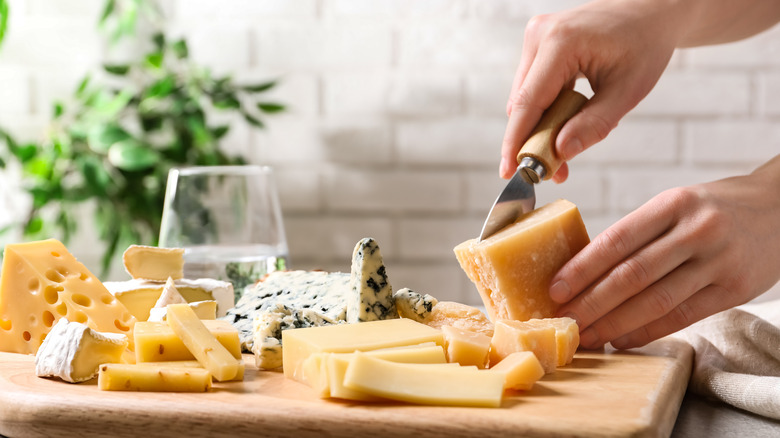How To Cut Popular Cheese Varieties The Right Way, According To An Expert
Cutting the cheese is no joke — and picking the right knife for the job is essential to preserving the flavors and textures cheesemakers work so hard to achieve. Chances are, you're probably using the wrong knife for a variety of kitchen tasks, and cheese is no different.
To help us out, Molly Browne, an American Cheese Society certified cheese professional and the education manager for Dairy Farmers of Wisconsin, gave Mashed some exclusive recommendations for choosing the best cheese tools for your next charcuterie board.
For soft cheeses, like brie and camembert, the wrong knife can cause the wheel to become smeared and misshapen. "Soft cheese can easily be crushed by a too-heavy knife," Browne points out. For these creamy and unctuous cheeses, the key is a knife with little surface area, and Browne recommends a holed 'skeleton' knife. This tool, which is also called an open-blade knife or simply a soft cheese knife, will prevent your bloomy-rind beauty from becoming too sticky (via Taste of Home).
And because of their colorful veining, blue cheeses are similarly delicate. Whether a blue cheese is dry and crumbly or high in moisture, Browne recommends "a cheese wire, which will allow you to cut effectively while maintaining the integrity of the cheese."
Other cheese knives you'll need for your next charcuterie board
Firmer cheeses require a different set of tools to cut and serve in the best way. Besides a regular chef's knife for styles like gouda and gruyere, cheesemongers recommend a tool called a parmesan knife, which you also might hear it called an almond knife or spade knife (per Domestikated Life). This is to create chunks out of craggy cheeses like cheddar and Parmigiano-Reggiano in ways that follow the natural curd structure (via Eater).
Other cheese knives feature two sharp prongs that curve upward at the tip of the blade, which cheese expert Molly Browne tells Mashed, are worthwhile, especially for presentation purposes. "The advantage of the prongs is touch-free serving, which makes this a suitable option for all styles of cheese," she says. And if you're making sandwiches, a cheese planer is a useful go-to for uniform slices, and you can even use it for other foods like butter, potatoes, and vegetables (via Bon Appetit).
So next time you put together a cheese board, seek out some underrated cheeses you'll wish you knew about sooner and grab the right tools for the job — and in no time at all, you'll be the big cheese.

